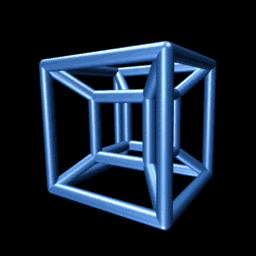BZOJ4562: [Haoi2016]食物链
Description
如图所示为某生态系统的食物网示意图,据图回答第1小题
现在给你n个物种和m条能量流动关系,求其中的食物链条数。
物种的名称为从1到n编号
M条能量流动关系形如
a1 b1
a2 b2
a3 b3
......
am-1 bm-1
am bm
其中ai bi表示能量从物种ai流向物种bi,注意单独的一种孤立生物不算一条食物链
Input
第一行两个整数n和m,接下来m行每行两个整数ai bi描述m条能量流动关系。
(数据保证输入数据符号生物学特点,且不会有重复的能量流动关系出现)
1<=N<=100000 0<=m<=200000
题目保证答案不会爆 int
Output
一个整数即食物网中的食物链条数
Sample Input
10 16
1 2
1 4
1 10
2 3
2 5
4 3
4 5
4 8
6 5
7 6
7 9
8 5
9 8
10 6
10 7
10 9
1 2
1 4
1 10
2 3
2 5
4 3
4 5
4 8
6 5
7 6
7 9
8 5
9 8
10 6
10 7
10 9
Sample Output
9
出生物题是什么心态???
一条食物链就是从0入度节点到0出度节点的一条路径,而这又是一个DAG,所以拓扑排序后随便DP一下就好了。
#include<cstdio>
#include<cctype>
#include<queue>
#include<cstring>
#include<algorithm>
#define rep(i,s,t) for(int i=s;i<=t;i++)
#define dwn(i,s,t) for(int i=s;i>=t;i--)
#define ren for(int i=first[x];i;i=next[i])
using namespace std;
const int BufferSize=1<<16;
char buffer[BufferSize],*head,*tail;
inline char Getchar() {
if(head==tail) {
int l=fread(buffer,1,BufferSize,stdin);
tail=(head=buffer)+l;
}
return *head++;
}
inline int read() {
int x=0,f=1;char c=Getchar();
for(;!isdigit(c);c=Getchar()) if(c=='-') f=-1;
for(;isdigit(c);c=Getchar()) x=x*10+c-'0';
return x*f;
}
const int maxn=100010;
const int maxm=200010;
typedef long long ll;
int n,m,first[maxn],deg[maxn],in[maxn],is[maxn],next[maxm],to[maxm],e;
void AddEdge(int u,int v) {
in[v]++;deg[v]++;is[u]=1;to[++e]=v;next[e]=first[u];first[u]=e;
}
int Q[maxn],f[maxn],g[maxn];
int main() {
n=read();m=read();
rep(i,1,m) AddEdge(read(),read());
int l=1,r=0;
rep(i,1,n) if(!in[i]) Q[++r]=i,f[i]=1;
while(l<=r) {
int x=Q[l++];
ren {
f[to[i]]+=f[x];
if(!(--in[to[i]])) Q[++r]=to[i];
}
}
int ans=0;
rep(i,1,n) if(!is[i]&°[i]) ans+=f[i];
printf("%d\n",ans);
return 0;
}



